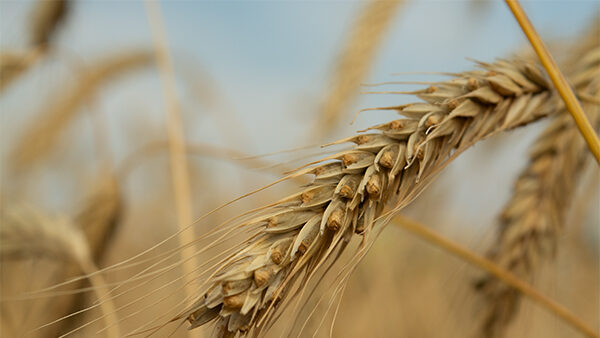The Canadian Seed Growers’ Association recently announced some changes to Circular 6, specifically to the mechanical purity standards and the isolation and previous land use requirements relating to the presence of buckwheat plants in pedigreed cereal crops and cereal plants in pedigreed buckwheat crops.

These changes address concerns that immature volunteer buckwheat plants are causing cereal seed crops to be declined certification or demoted to a lower class despite the minimal risk they pose to the mechanical purity of the seed. The updates refine the in-field mechanical purity standards to meet the needs of seed growers and their customers.
In January’s issue of Germination, we provided an update on our mechanical purity research project to gather seed cleaning data to inform a review of CSGA’s maximum impurity standards for mechanical impurities in cereals in Section 2 of Circular 6. We invited growers to participate in the project if their 2021 fields were demoted or declined pedigreed status due to mechanical impurities no more than six times the maximum number of other crops permitted in the current Circular 6 standards.
The results of this project will be presented to CSGA’s Regulatory Services Committee to help inform future modernization of seed crop certification requirements. We look forward to reporting more results soon.
Broader Vision
The mechanical purity project fits into a broader initiative to address our previous land use requirements. There’s a lot of talk about sustainability right now, and growers increasingly want to intercrop and plant cover crops in their fields. Changing previous land use requirements to accommodate more cropping options would allow seed growers to adopt more sustainable practices.
CSGA will engage with its crop-specific working groups to provide recommendations to CSGA’s Regulatory Services Committee before proposing changes to its land use requirements and opening a broader stakeholder consultation.
Historically, certification requirements have been written with the assumption that there’s only one crop produced in a field each year.
Now, with more people having two crops in the same year in the same field and sometimes cover crops into the fall, our land use requirements need to be reviewed and updated. As part of that process, we will engage with our working groups and then consult with stakeholders on any potential changes before updating our land use requirements.
CSGA is continuing to modernize to better serve seed sector stakeholders. As interest in cover crops increases, our regulations need to be flexible to ensure seed growers can implement best management practices to enhance soil health, contribute to sustainability, and continue producing the quality seed for which they are known.
What is the Purpose of the CSGA Land Use Requirements?
Previous land use requirements minimize the risk of contamination from volunteers or other varieties of the same crop kind. Generally, these requirements don’t allow a seed crop to be grown on land that could be a source of contaminating plants derived from the previous crop. Volunteers that emerge from the previous crop could cross-pollinate with or become contaminants in the seed crop. This is particularly important if the volunteer plants are a different variety of the same crop kind or the seeds from the volunteer plants are difficult to separate from the seeds of the seed crop.
Based on scientific principles and sound cropping practices, CSGA land use requirements govern the land which is eligible to produce a pedigreed seed crop. They specify:
- That crops should not be planted on land where volunteer growth from a previous crop may cause contamination
- The minimum requirements established for each crop kind which are outlined in the crop-specific sections of Circular 6
- That the status granted to crops of barley, bean, buckwheat, canary seed, chickpea, durum, fababean, flax, lentil, lupin, oat, pea, rye, soybean, triticale and wheat is in part determined by the previous crop










